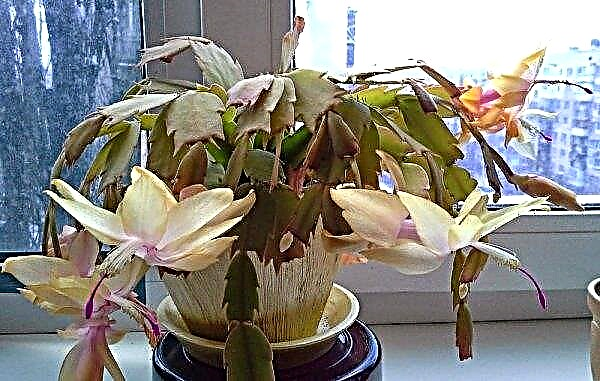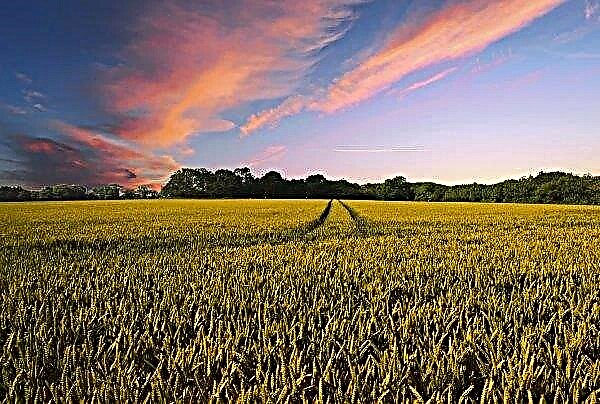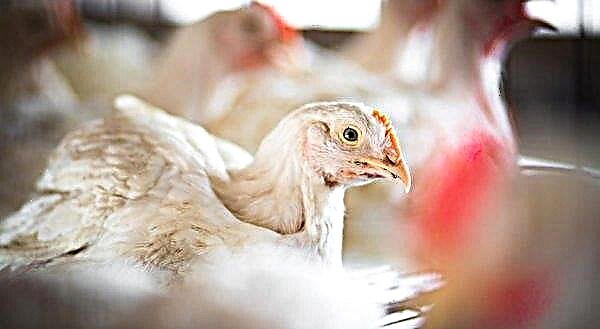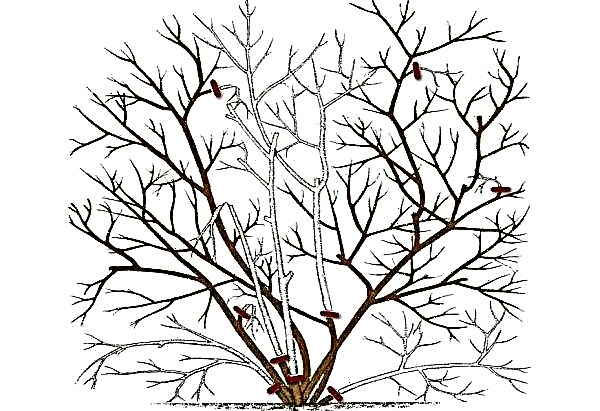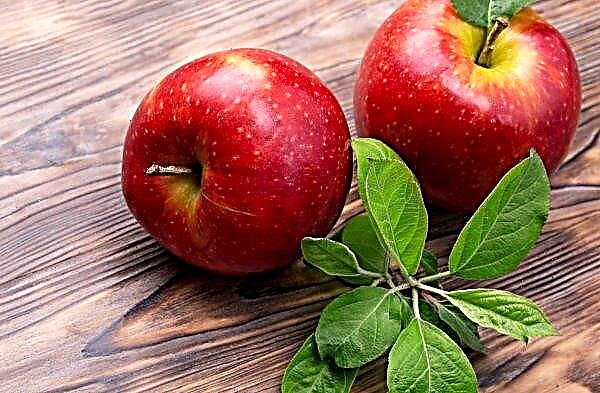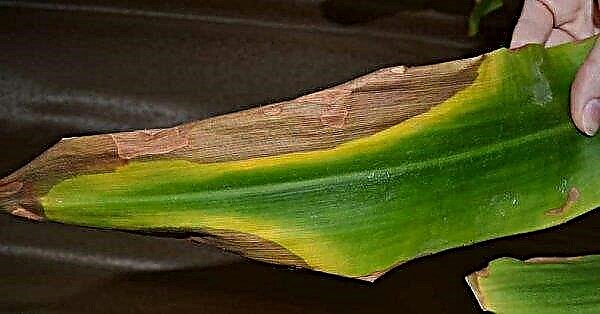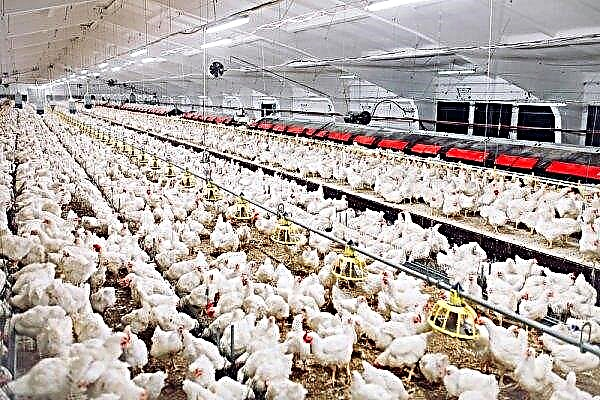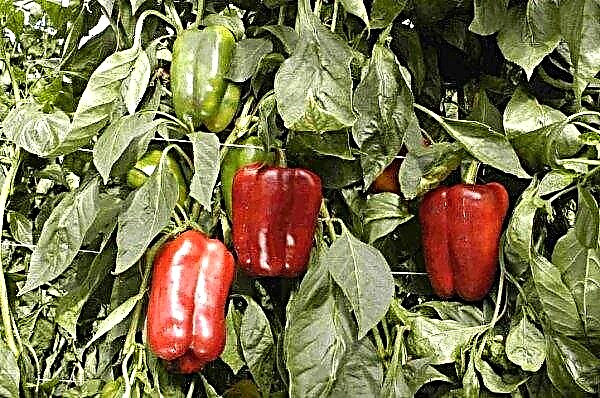The choice of cabbage varieties should be approached responsibly. The correct selection of plants for climatic and relief conditions in the region increases the chances of a high and high-quality crop, therefore, before planting any variety in a summer cottage, you should familiarize yourself with its characteristics and preferences. From the article you will learn about the hybrid cabbage Etma F1.
Breeding and cultivation regions
The Etma F1 hybrid was obtained by Dutch breeders from Rijk Zwaan. In open areas it is recommended to grow it in regions with a warm climate.
Description and characteristic
The hybrid is suitable for cultivation in open beds. However, it gives the best crops in a greenhouse, greenhouse, under a film or agrofibre.

Subject to the recommendations for planting and conducting quality care, the hybrid gives an average of 7 to 10 kg per 1 m². Plants have good immunity to fusarium and internal necrosis.
Did you know? Cabbage weighing 63 kg was raised in 2012 by a resident of the United States, Scott Robb. Typically, heads of cabbage, depending on the variety, are capable of reaching a maximum weight of 15 kg, and their average weight is 2.5 kg.
Description of the head of cabbage
The heads of this grade are compact in size, have an average weight of 0.7 to 1.5 kg, and are rounded in shape. They are characterized by density. The upper leaves are painted in a light green color.
Ripening time
Hybrid ripens very early - from the emergence of seedlings or transplanting seedlings to the maturation of the heads takes 45-50 days. Ripening occurs together.
Taste qualities
The heads are distinguished by excellent taste characteristics. They are juicy, sweet, almost devoid of bitterness.
Pros and cons of the variety
- The Etma hybrid has a number of advantages, among which:
- early ripening and early sowing;
- excellent taste of the fruit;
- attractive appearance of heads of cabbage;
- resistance to dangerous diseases;
- lack of tendency of heads to crack;
- the ability of the fruit to tolerate transportation well.
- Minuses
- The disadvantages of cabbage include a short shelf life.
Features of growing varieties
This cabbage can be grown in seedlings and seedlings. The first method is preferable, because it allows you to protect young plants from return frosts and achieve a good percentage of seed germination.
Seedlings are planted at home, and then moved to a permanent place of growth in open or closed ground. For planting seedlings, you need to purchase seeds, prepare the soil and containers - directly for planting and for diving.
For planting seedlings, you need to purchase seeds, prepare the soil and containers - directly for planting and for diving.
Preparing seeds for planting
Since Etma cabbage is a hybrid, it is necessary to grow it only from seeds purchased in a specialized store. For packaged seed, additional treatments are not required - the manufacturer took care of the pickling and rejection. If the packaging does not indicate that it is not necessary to soak the seeds, then for better germination they can first be placed in warm water, heated to + 40 ... + 50 ° C, for 15–20 minutes, and then dipped in cold for a couple of minutes. Only fully dried seeds should be sown.
Growing seedlings
The soil for growing seedlings is also bought in a specialized store or mixed with your own hands. Here are some suitable options for soil substrate for growing cabbage seedlings:
- peat + sand (50/50%);
- peat + turf + sand (75/20/5%);
- humus + turf + sand (45/50/5%).

Sowing is carried out 55–65 days before the planned planting of the sprouts in a permanent place, following the following instructions:
- Lay a layer of soil substrate 3-4 cm high in a container for growing.
- Pour it with "Alerin-B" and "Gamair" (2 tablets per bucket of water).
- After 1-3 days, make furrows in the soil 1 cm deep at a distance of 3 cm from each other.
- Pour seed into the furrows at a distance of 1-1.5 cm from each other.
- Sprinkle the seeds with a layer of soil 1.5–2 cm high.
- Place the container in a room where the temperature is + 18 ... + 20 ° С.
- After the appearance of sprouts, lower it to + 7 ... + 9 ° C.
 Approximately 1–1.5 weeks after the shoots appear, you need to dive.
Approximately 1–1.5 weeks after the shoots appear, you need to dive.To dive, you need to prepare pots with a diameter of 6-8 cm and soil with the same composition as when planting. In it you need to mix double superphosphate (1 tbsp. L. Per 1 bucket of the mixture) and wood ash (2 tbsp. L.). River sand should be poured over the soil layer - this is necessary to prevent the development of the black leg.
Important! Seedlings can be grown without picking. In this case, 1-2 seeds are sown immediately in separate pots with soil substrate.
Dive plants should be placed at a temperature of + 17 ... + 18 ° C. After a couple of days, the conditions are made cooler: during the day - up to + 13 ... + 14 ° С, at night - up to + 10 ... + 12 ° С. When 2 leaves are formed on the plants, they are fed with a complex mineral fertilizer. In the same period, fertilizers are applied a second time. Urea (1 tbsp.) And potassium sulfate (1 tbsp.) Dissolved in a bucket of water are used.
 2–2.5 weeks before the expected date of the seedlings moving to the open ground, they begin to harden it - they take it out daily to fresh air, starting from 15–20 minutes and gradually increasing the length of stay.
2–2.5 weeks before the expected date of the seedlings moving to the open ground, they begin to harden it - they take it out daily to fresh air, starting from 15–20 minutes and gradually increasing the length of stay.
Site and ground preparation
Successful cultivation of cabbage in the open field is only possible if a successful plot is selected and crop rotation rules are followed. This garden plant will grow well and bear fruit only in a well-lit area, sheltered from the north winds.
This garden plant will grow well and bear fruit only in a well-lit area, sheltered from the north winds.
It is better to plant it in the beds, where carrots, potatoes, cucumbers, onions, beans, cereals, and garlic were previously grown. Do not place it after cruciferous crops, tomatoes, radishes, turnips, beets.
The best cabbage yield comes from planting in loamy soils with neutral acidity.
Preparatory work on the site must begin in the fall. It must be cleaned of plant debris, dug deep and fertilized with humus, manure or compost.
In the spring, a few weeks before transplanting, a mixture of urea (1 tbsp.), Superphosphate (1 tbsp.) And wood ash (1 cup) is added to the beds.
Important! According to the rules of crop rotation, cabbage can not be cultivated on one site for longer than 2 consecutive years. Otherwise, the plant decreases productivity and increases the risk of developing diseases and attacks of harmful insects.
Transplanting seedlings into the ground
Planting seedlings in the ground is necessary when it turns 55–65 days. At the time of transplantation, it should look strong, be at least 15 cm high, have a developed root system and 6-8 leaves.Sprouts are transferred to the ground from late spring to mid-June by transshipment. This means that after removal from the pots, the root system is not cleaned of the earth, but transplanted together with an earthen lump.
The holes should be slightly wider and deeper than the earthen lump. The recommended planting scheme for drip irrigation is 50 × 30 cm, without irrigation - 45 × 35 cm (rows × holes). Depth of landing - to the bottom leaf.
 For transplanting seedlings choose a cloudy day. After moving the seedlings into the ground, it is covered with agrofibre.
For transplanting seedlings choose a cloudy day. After moving the seedlings into the ground, it is covered with agrofibre.
Plant care
Cabbage does not require much attention. It is enough to regularly water it, periodically feed it, take care of the soil, spud and carry out preventive treatments against diseases and harmful insects.
Watering and feeding
In the first month after the seedlings are planted in the ground, it needs to be watered 3-4 times a week. Under one plant, pour 2-3 liters of water. During the period of filling the heads of humidification, it is necessary to limit. The best way to water cabbage is drip.
The best way to water cabbage is drip.
A month after planting, it is worth adjusting the irrigation regime in the amount of 1 time per week. For 1 m², you will need to spend 10-12 liters of water heated to + 18 ° C and above. The best way to water cabbage is drip.
Important! Humidification of a garden crop with cold water is not recommended. It increases the risk of developing fungal infections.
For the season, it is recommended to make 3-4 fertilizer application, adhering to the following schedule:
| Fertilizer application period | Fertilizer Options |
| 2 weeks after moving seedlings to the ground |
|
| 10 days after the first |
|
| Before fruit formation |
|
| In the last summer month |
|
Loosening and weeding
Each time when irrigation is carried out or precipitation falls, it is necessary to loosen the soil in the near-trunk zone and row spacing. This is necessary to prevent compaction of the upper soil layer and improve the moisture and air conductivity of the soil. The depth of cultivation should be approximately 7 cm. Since weeds create a shadow for photophilous cabbage, which prevents it from developing normally, and become a source of reproduction of diseases and parasites, regular weeding is required. Weed cabbage carefully to avoid damage to the root system.
Since weeds create a shadow for photophilous cabbage, which prevents it from developing normally, and become a source of reproduction of diseases and parasites, regular weeding is required. Weed cabbage carefully to avoid damage to the root system.
Hilling bushes
One of the mandatory procedures for growing cabbage is hilling. It is necessary to stimulate the growth of lateral roots and improve the development of the plant. It is produced by raking sap of earth from the near-trunk zone from a distance of 25 cm and sprinkling it with a slide to the stem.
For the season, it is recommended to make 2 hills in the following periods:
- 20 days after transplanting seedlings into the ground;
- 10-12 days after the first procedure.
Pest and Disease Control
With errors in planting and caring for cabbage, harmful insects can affect it. Like all plants of early ripening, the Etma hybrid may suffer from the following parasites:
- Aphid. The insect drinks juice from the plant. Settles on the lower leaf plate. You can remove it by spraying with infusions of insecticidal plants, onion husks.
- Medvedka. This parasite causes serious damage to the roots and leads to the death of the plant. Prevention is regular and deep digging of the soil. The poison baits “Phenoxin Plus” and “Thunder” will completely remove pests.
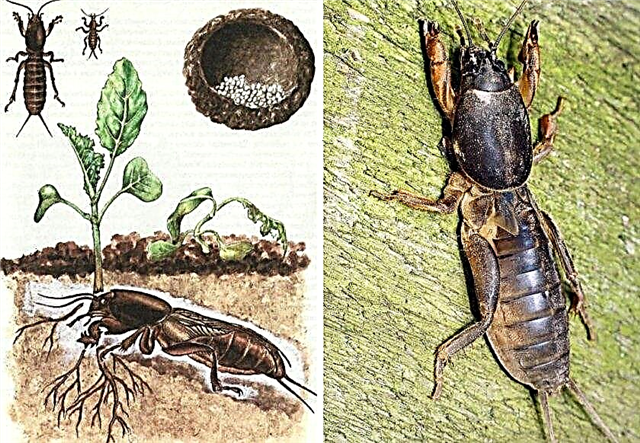
- Slug. So that these insects do not get close to the cabbage, it is necessary to sprinkle the aisles with chalk or crushed egg shells. The near-trunk zone should be dug up and watered with “Aktofit”.
- Cruciferous flea. The pest leads to the appearance of ulcers on the plant and the death of tissues. You can prevent flea attacks by sprinkling row spacings with ash, tobacco dust, spraying plants with ash infusion.
- Cabbage leaf beetle. The presence of the leaf beetle is indicated by holes and gnawed edges on the leaves. The use of biological products, for example, "Fitoverma", "Bitoxibacillin" allows you to get rid of the pest.
- Cabbage butterfly. In order not to let the butterfly enter the garden, it is possible to spray with valerian, infusions of needles, potato tops, saline, soap-ash solutions. The fight against it is carried out by “Aktofit”, “Fitoverm”, “Bitoxibacillin”, “Actara”, “Decis”.





To prevent the appearance of pests, the beds are sprinkled with wood ash, tobacco dust, black pepper. Effective planting between rows of strongly smelling plants, for example, marigolds, dill, parsley, and marigolds.
Of the most dangerous diseases:
- White rot. White rot or sclerotinia is excited by fungi, which are active in high humidity and sudden temperature jumps. The spread of the pathogen is facilitated by thickened beds. Signs of the disease are the formation of white spots and gray plaque on the heads. If signs are found, it is necessary to immediately remove the diseased organs, treat the plantings with potassium permanganate mixed with chalk and diluted in water, sprinkle beds with coal or lime. To avoid infection during storage, disinfect the storage area.
- Kila. The disease develops with high humidity. The first symptoms are wilting of the lower leaves, the appearance of growths on them. If signs are found, you need to get rid of diseased plants. Plantings are treated with systemic fungicides. In the aisles they dig a beet tops.
- Blackleg. The disease develops with high humidity and acidity of the soil, an excess of nitrogen. When infected, leaves and stems rot. To get rid of the disease, the treatment with Fundazol and Planriz is used.



Features of harvesting and storage of crops
Head out on a day when there is no sun and rainfall. The heads must be cut with a sharp knife, leaving a stalk 8-12 cm high.
Store the vegetable in a refrigerator or cellar when:
- temperature from 0 ° С to + 5 ° С;
- good air circulation;
- humidity 90–95%.
Cabbage can also be stored for longer if it is dried or frozen. The dry product is suitable for use 2 years, frozen - 1 year. Etma cabbage is most often grown to be consumed fresh.
Did you know? After heat treatment of cabbage, it does not decrease, but the amount of vitamin C increases. The fact is that ascorbigen, which is part of the chemical composition of the plant, after heating passes into ascorbic acid.
Thus, the Etma hybrid has a number of advantages and can be grown in open or protected ground in seedling or seedlings. To get the crop, it is important to comply with the planting dates and produce quality care.


